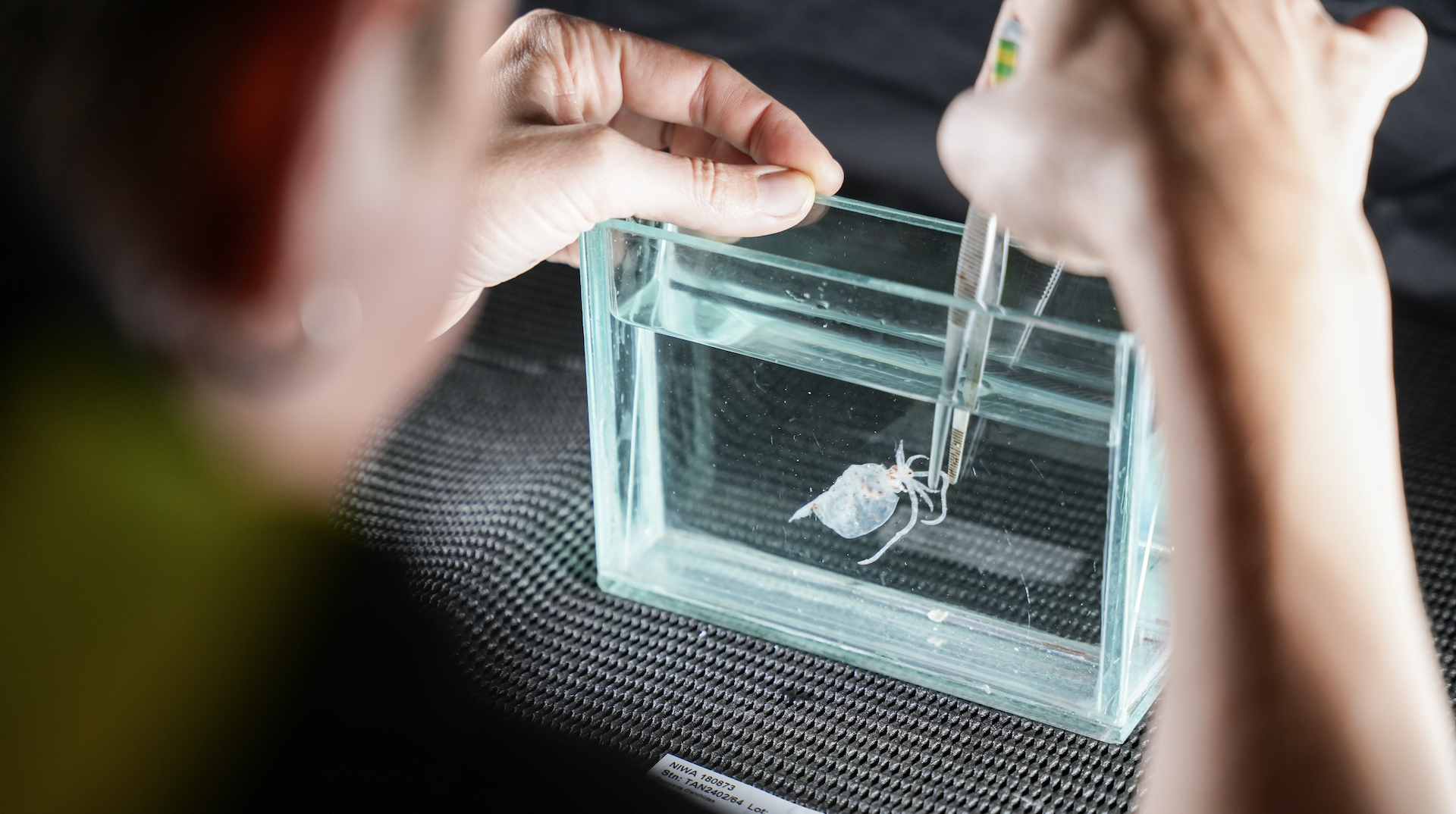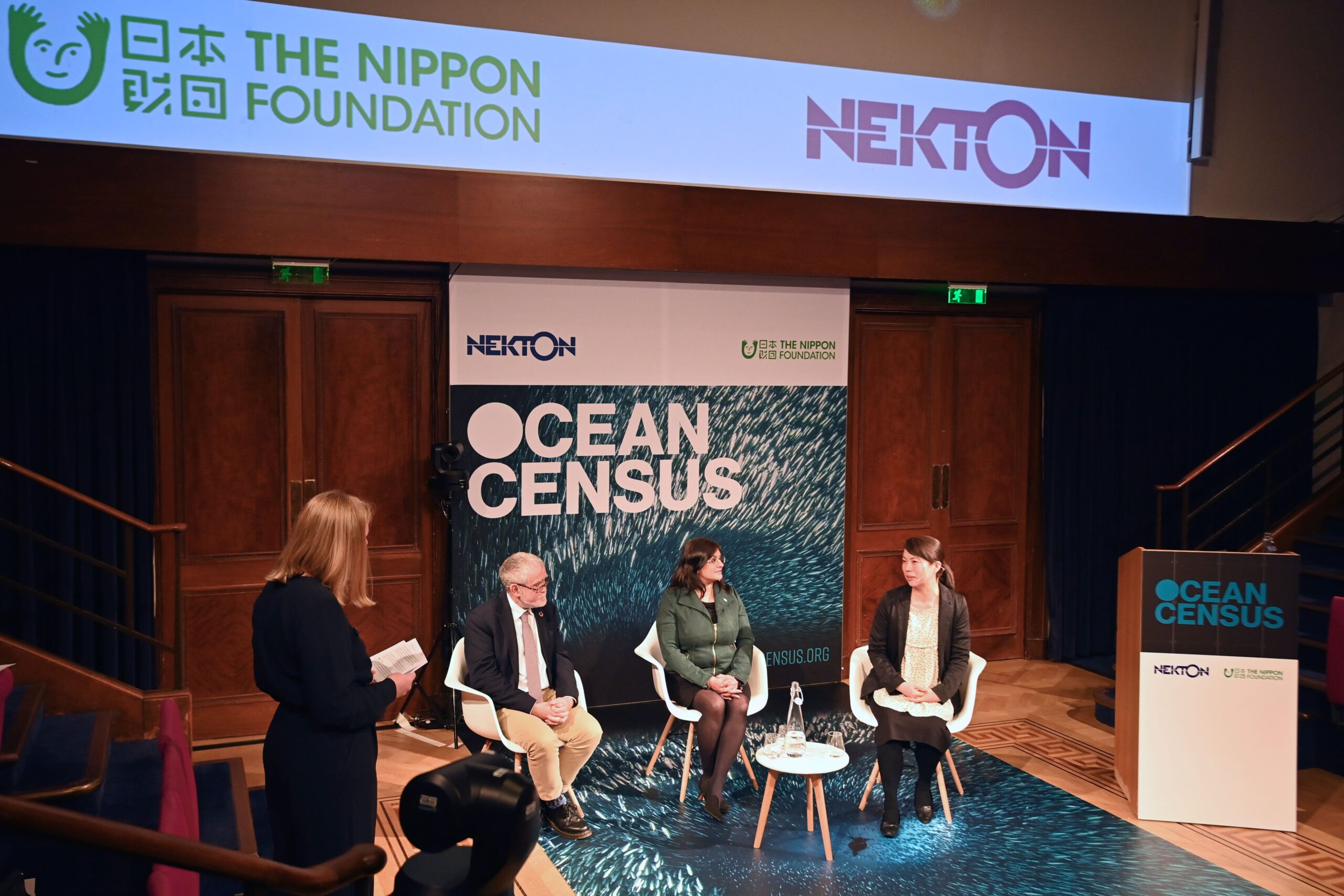

Johnston Atoll
PACIFIC OCEAN: 2 – 29 AUGUST 2023
Ocean Census joined forces with the Ocean Exploration Trust (OET) for a 27-day expedition to survey deep-sea biodiversity on the ancient seamounts surrounding Johnston Atoll, funded by NOAA Ocean Exploration via the Ocean Exploration Cooperative Institute.

Mission GUIDE
Operations aboard the 68-metre E/V Nautilus deployed the dual-body ROV system, consisting of the main ROV Hercules and the tow-sled Atalanta, and focused on exploring seafloor areas to maximum depths of 4,000 metres.
The deep sea surrounding Johnston Atoll is home to some of the most pristine marine ecosystems on Earth. Whilst recent expeditions have increased our baseline knowledge of this remote region, large areas remain completely unexplored with a high potential for the discovery of new species.
Taxonomists Dr Raissa Hogan and Dr Kaveh Samimi-Namin were selected from the Ocean Census Science Network to join the expedition as part of the global remote and at-sea science team. Dr Hogan, a deep sea sea-pen specialist from the University of Galway, participated during field operations, whilst Dr Samini-Namin, a deep-sea octocoral specialist, contributed remotely, advising on ROV sampling operations through the OET Scientist Ashore Program and Science Portal and interacting with real-time information on ship operations and data feeds.
Mission facts
Dates
2 – 29 August 2023
Duration
27 days
Location
Johnston Atoll, Pacific
Type
Partner
Image credits
Ocean Census

Mission brief
Mission to Discover
Octocorals: Octocorals represent a highly diverse group of colonial organisms distinguished by numerous polyps with eight (‘octo’) hollow tentacles. These deep and cold water octocorals feed on particular particles drifting through the water. To optimise this feeding mechanism, most octocorals extend upwards into the water, adopting various forms such as fans, brushes or whips. They often service as habitats for other marine life including brittle stars, lobsters and worms. Octocorals sampled in this expedition include soft corals, sea pens, bamboo corals and primnoids.
Black corals: Also known as antipatharians, black corals are a type of soft coral found in deep waters. Their name derives from their uniquely coloured skeletons, which have been used for centuries to make jewelery. While they inhabit all oceans, they are most common in the deep waters of tropical and subtropical regions, like those explored during this expedition. Black corals can be a defining feature of deep water reef systems.
Sponges: Sponges are filter feeding invertebrates, among the earliest animal groups in evolutionary history. In many deep-sea regions, they form the primary species, creating intricate and diverse ecosystems. The expedition sampled sponges like the glass sponges (Hexactellinida), recognised by their silica spicule skeleton that can merge into complex designs.
Squat Lobsters: Predominantly deep-sea dwellers, squat lobsters boast long claws, often extending twice their body length. They sometimes associate with other marine species, including octocorals. Contrary to their name, they share a closer genetic link to hermit crabs.
Mission Objectives
Combining multi-disciplinary research, species discovery, knowledge exchange and public engagement.
Science: Map uncharted seabed to support ROV operations and conduct ROV dives in previously unsurveyed priority areas identified by NOAA Ocean Exploration and the scientific community.
Species Discovery:Sample the diversity and distribution of deep-sea benthic communities, particularly those found within coral and sponge habitats, fish habitats, and other vulnerable marine habitats with high conservation value.
Knowledge Exchange:Work with a virtual network of on-shore scientists participating through the OET Science Portal and interacting during ROV dives in real time, including advising on sampling operations.
Education:Working with on-board educators, able to broadcast live lessons to connect with the OET network of participating schools.
Public Engagement:Broadcasting ROV dives over YouTube, enabling the public to watch in real time.
Mission Partners
News
Join the census
An Alliance of scientists, governments, marine research institutes, museums, philanthropy, technology, media and civil society partners.









































